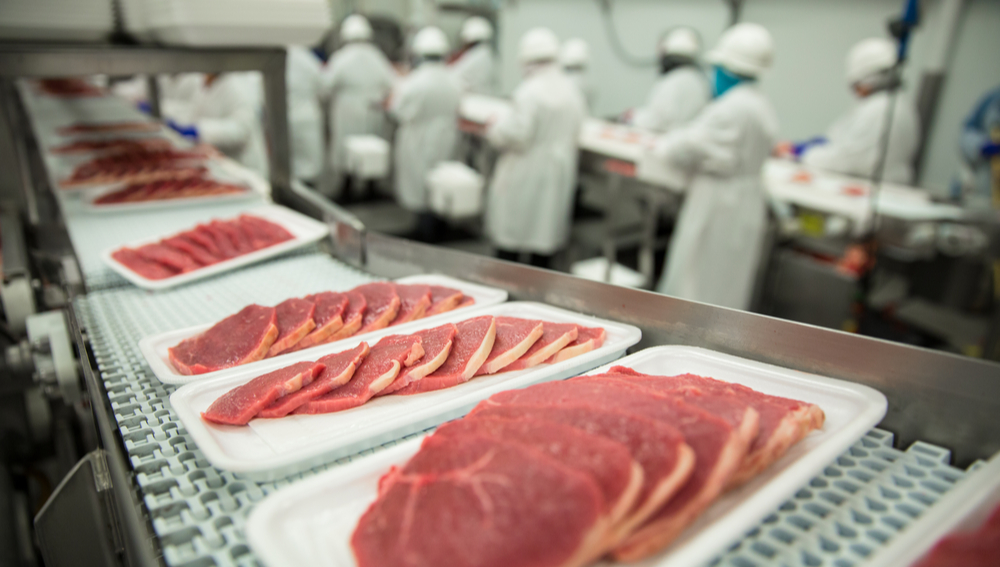
Safety and Risk Mitigation in Meat Processing Plants Meat processing plants are essential to the global food supply chain, but they also pose unique safety risks to workers and consumers. Recent investigations have uncovered concerning safety hazards within these facilities, necessitating the implementation of comprehensive risk mitigation measures. Key Safety Risks: * Slips, Trips, and Falls: Wet and slippery floors, uneven surfaces, and heavy equipment increase the risk of accidents. * Cuts and Lacerations: Sharp knives and machinery pose significant hazards to workers who handle meat carcasses. * Ergonomic Hazards: Repetitive motions, awkward postures, and heavy lifting can lead to musculoskeletal disorders. * Exposure to Bloodborne Pathogens: Contact with contaminated meat and biological waste can transmit viruses and bacteria. * Chemical Hazards: Chemicals used for cleaning and disinfection can cause skin irritation, respiratory problems, and chemical burns. Discovered Hazards: * Investigations have revealed the presence of bacteria, such as Salmonella, E. coli, and Listeria monocytogenes, in meat products. * Workers have been exposed to high levels of noise, which can cause hearing loss. * Ventilation systems have been inadequate, leading to poor air quality and the accumulation of harmful gases. Risk Mitigation Measures: To address these safety risks, meat processing plants must implement comprehensive mitigation measures, including: * Regular Inspection and Maintenance: Equipment, floors, and work surfaces should be inspected and maintained regularly to prevent accidents. * Hazard Analysis and Critical Control Point (HACCP): This system identifies and controls potential hazards throughout the production process. * Adequate Ventilation: Plants must ensure proper ventilation to prevent the accumulation of harmful gases and maintain air quality. * Personal Protective Equipment (PPE): Workers must wear appropriate PPE, such as gloves, aprons, and earplugs, to protect against hazards. * Training and Education: Employees must receive comprehensive training on safety procedures, equipment handling, and hazard recognition. * Ergonomic Improvements: Workstations and equipment should be designed to minimize ergonomic risks. * Infection Control Measures: Plants must implement rigorous cleaning and disinfection protocols to prevent the spread of bacteria. * Traceability and Recall Systems: Robust traceability systems allow for the prompt identification and recall of potentially contaminated products. By implementing these measures, meat processing plants can significantly reduce safety risks, protect workers, and ensure the production of safe and high-quality food products. Ongoing monitoring and evaluation are essential to ensure the effectiveness of these programs and maintain a safe work environment.Safety Hazards Found in Meat Processing PlantsSafety Hazards Found in Meat Processing Plants An undercover investigation at two meat processing plants in China has revealed concerning safety risks in their duck and goose intestine products. Unsafe Practices * Workers in Qingfeng County, Henan, were found stepping on goose intestines to extract feces and dyeing them with blood. * At Yashare Meat Food Co. in Binzhou, Shandong, duck intestines were carelessly placed on the floor, mixed with dirty water. * Employees removed dead ducks from sewage channels and returned them to the production line. * Workers were seen urinating into the sewage channels. Unhygienic Conditions * Both factories exhibited dirty and chaotic working environments. * Underage workers were present at the Yashare workshop. Company Response * Yashare claimed that the affected workshop had been outsourced to a new contractor who may have had lax standards. Public Outrage The report has sparked outrage online, with many expressing disgust and disappointment. Industry Concerns Despite the industry’s growth, it faces regulatory challenges such as fragmentation, lack of coordination, and low entry barriers. Regulatory Actions * Investigations are underway by both city and provincial authorities. * Factory closures may occur depending on the findings of the investigations. Conclusion The unsafe practices and unhygienic conditions found in these meat processing plants pose serious health risks. Urgent action is required to address these issues and ensure the safety of food products for consumers.
Meat processing plants have come under scrutiny in recent months as concerns have been raised about the safety of the products and the working conditions of employees. A number of investigations have uncovered serious safety risks in these facilities, including unsanitary conditions, lack of proper safety equipment, and high rates of injuries. In some cases, these conditions have led to outbreaks of foodborne illnesses, such as E. coli and Salmonella. Workers in meat processing plants are also at risk of serious injuries, such as amputations, burns, and chemical exposure. The fast-paced and repetitive nature of the work can also lead to musculoskeletal disorders. In response to these concerns, some states and municipalities have begun to implement new regulations for meat processing plants. These regulations typically focus on improving sanitation, safety equipment, and worker training. The meat processing industry has pushed back against these regulations, arguing that they are costly and unnecessary. However, consumer groups and public health advocates say that these regulations are essential to protect the public from unsafe food and to ensure the safety of workers. The debate over the safety of meat processing plants is likely to continue as more information comes to light about the risks associated with these facilities. In the meantime, consumers should be aware of the potential risks and take steps to protect themselves from foodborne illnesses.
Posted inNews